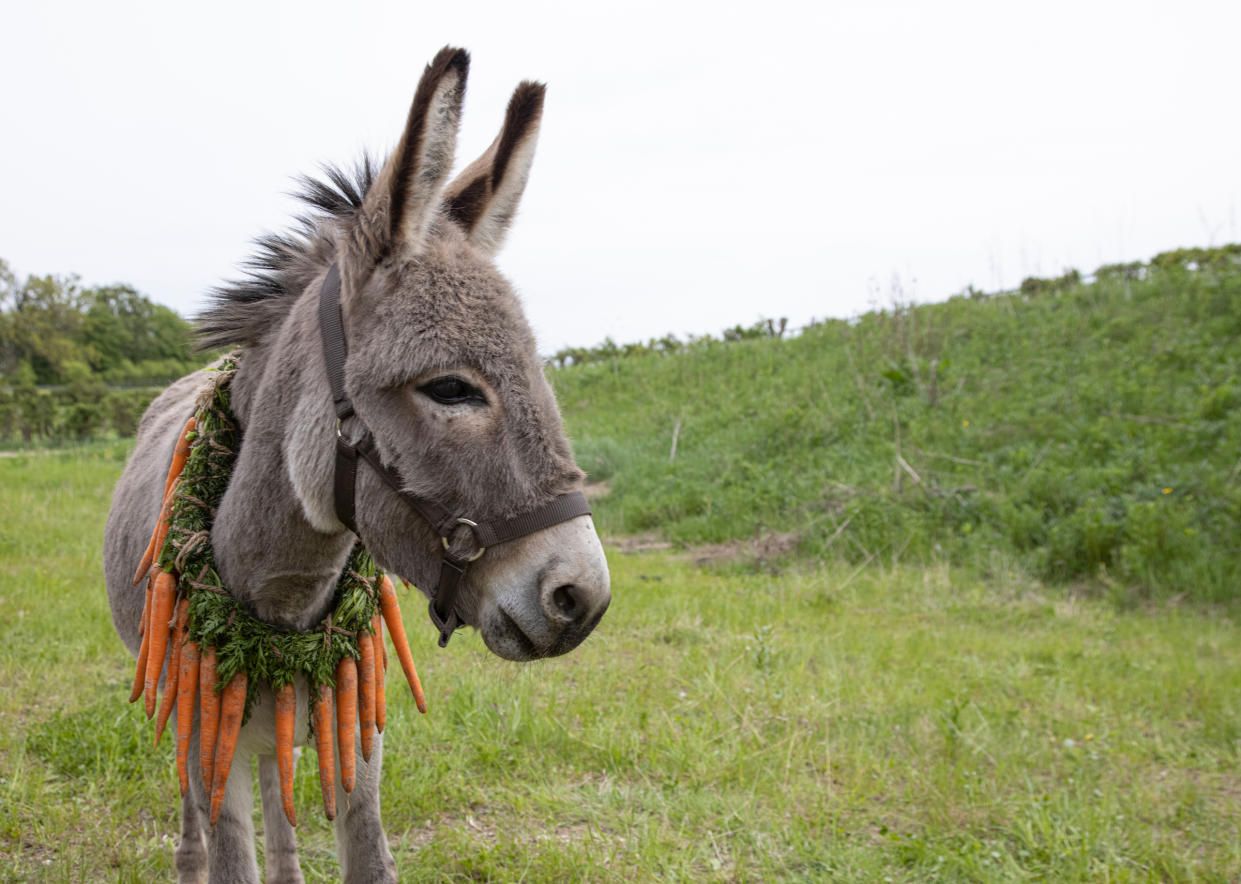A Donkey's Inner Life Reveals Itself in Jerzy Skolimowsky's Tender, Glorious EO

- Oops!Something went wrong.Please try again later.
Credit - fot. Aneta Gębska, Filip Gębski
Like a mistreated starlet, nature often gets a bum deal in the movies. When the light is good, you can always just turn the camera on it and make a pretty picture. But it takes a great deal of care—your eyes need to learn to listen, perhaps, to all that’s in front of them—to capture its fierce, hushed awesomeness.
Polish filmmaker Jerzy Skolimowski does that, and more, in his intimate zephyr of a film EO, the story of a donkey who journeys from Poland to Italy, experiencing kindness and its stark opposite at the hands of humans, communing with the other animals and flora around him, sometimes even just picking up scents, and secrets, carried on the breeze. This is a sad story, but not a punishing one; it draws out a kind of joyful melancholy. Animal lovers—and Skolimowski himself is one—may find it difficult to watch at times. (I don’t recommend it for kids.) But this great and unpredictable filmmaker, now 84, takes great care with his donkey, and with our feelings. Any violence takes place off-screen, maybe not so much to soften the effect but out of respect for his main character and for us. The last thing Skolimowski and his cowriter, Ewa Piaskowska (also his wife), want to do is to throw us out of the movie and its delicate spell. There is no more beautiful-looking film this year; shot by Michal Dymek, it often looks lit from within, glowing as softly as a lantern. And even beyond that, EO may be one of the greatest movies ever made about the spirit of animals, as much as we can know it.
EO begins with dream images, a circus scene tinged with red. We catch glimpses of a woman in a satin costume, flashes of gray donkey fur, the orblike wonder of a large, unblinking eye. This donkey, EO—a name that echoes the sound he makes, a song built right in—has a job as a performer. He also has a costar who loves him, Kasandra (Sandra Drzymalska). When they’re separated, it’s her gentle kindness that he’ll remember. Skolimowski shows this in tender flashbacks; if he’s anthropomorphizing, he’s also making a pretty good guess as to what might go on in an animal’s head.
Read more: Dead to Me Was a Love Story All Along

The circus goes bankrupt. All the animals are sold off. EO is carted off to a new home, which in some ways, save Kasandra’s absence, isn’t so bad: He now lives at what looks to be a large stable, somewhere in the Polish countryside. It’s a brand-new structure, and a few pretentious dignitaries are on hand to cut the ribbon. Eventually, the camera turns from them to EO standing watchfully nearby. There’s a regal circlet of carrots around his neck, ready for munching whenever he pleases. For now, he’s a guest of honor; later, he’ll be enlisted to pull a little cart, and that’s fine too. Until it isn’t. Unnerved by his proximity to two noisy horses being introduced for the first time, presumably for mating purposes, he knocks over a shelf full of trophies. Away he goes to his next home.
This one isn’t so bad, either, though he’s too depressed to accept the single fat carrot a well-meaning farm lady tries to offer him. (She has no idea how paltry her offering is, compared to his past 24-carrot adornment.) EO’s adventures eventually take him elsewhere: to a majestic night forest, half frightening, half glorious, where a fat spider spins a web from fairy thread and skinny foxes twitch in the moonlight. He finds his way to a small village, where he brays at a display of goldfish-filled aquariums in a shop window (who knows why?) and later becomes a hero for a local football team, who adopt him as a kind of mascot. But right after this, something terrible happens to him. There’s an intercession, a healing. Somehow he ends up in an Italian mansion—Isabelle Huppert is there in a chic-scary red-patterned velvet dress. Because, why not?
Read more: The 58 Most Anticipated Movies of 2022
This is the ebb and flow of EO: we both watch him and see the world through his eyes. Running with his cart, his legs moving like little machines, his ears pointing to the sky, he’s a marvel of determination and efficiency. His fur has a pleasing, soft-rough texture—you can feel it without even touching. His eyes, proportionally enormous, both hold and reflect all his thoughts and dreams and memories—or maybe they’re just reflectors of our own? bThe point is that he becomes our twin. What happens to him happens to us.
EO won the Jury Prize at Cannes last spring; when Skolimowski took the stage to accept, he thanked all six of the donkeys who played EO by name. In the months since I first saw this film, many of the people I’ve talked to about it have nodded and said knowingly, “Ah, like Bresson’s Au Hasard Balthazar.” Well, yeah—and no. Skolimowski has spoken of his love for that film, and how much it moved him, and how it’s certainly an influence on EO. But even if Skolimowski’s donkey sometimes suffers, the movie is hardly about his suffering. Skolimowski’s approach is mildly experimental, but in the end direct. His movie is about, maybe, all the reasons we love animals, all the reasons we can’t explain. We look at them and see a soul there—no scientist can yet prove its absence—and it helps us locate our own. Sometimes it’s easier to believe in animals than it is to believe in God. And much easier to believe in them than in ourselves.

